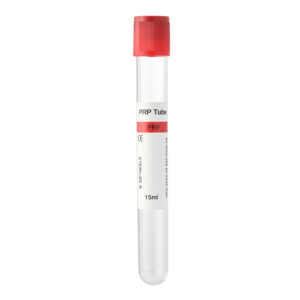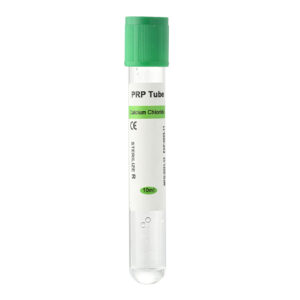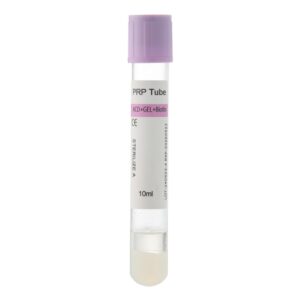In clinical diagnostics and medical research, the erythrocyte sedimentation rate (ESR) is a widely used blood test. It measures how fast red blood cells (RBCs) settle in a sample of anticoagulated blood over a set period. Although a single ESR reading is not enough to diagnose a specific disease, it often helps detect signs of inflammation, infection, and certain tumors. The specialized blood collection device for this test is called an ESR tube (or “blood sedimentation tube”). Below is a detailed overview of its structure, uses, and best practices to ensure accurate results.
1. ESR and ESR Tubes: The Basics
What is ESR?
ESR reflects the rate at which RBCs settle under standardized conditions, usually measured after 1 or 2 hours. A higher ESR can indicate the presence of inflammation, infections, or malignancies, while a very low ESR can be associated with certain blood disorders. ESR by itself cannot confirm a diagnosis, but it often flags the need for further evaluation.
Role of the ESR Tube
ESR tubes are designed specifically for blood sedimentation tests. They typically contain an anticoagulant—commonly sodium citrate—to prevent clotting so that RBCs can sink uniformly. The tube also has a vacuum to draw in a preset volume of blood, maintaining a consistent sample size for reliable measurements.
2. Structure and Key Features
- Calibrated Markings
Modern ESR tubes often include measurement markings to read the height of sedimented RBCs after a set interval. This practical feature is in line with standardized methods like Westergren or Wintrobe, helping ensure precise and straightforward measurements. - Anticoagulant Type and Ratio
Sodium citrate is the most common anticoagulant in ESR tubes. Typical concentrations include 3.2% or 3.8%. Laboratory technicians must verify the correct ratio of blood to anticoagulant for accurate results. Deviations can affect sedimentation rates and skew data. - Vacuum Collection
ESR tubes use vacuum technology to automatically fill the tube with a fixed volume of blood. Compared to traditional open sampling, vacuum collection lowers contamination risk and maintains consistency from one sample to the next.
3. Clinical Applications of ESR Tubes
- Inflammation and Infection
During inflammation or infection, plasma protein levels—especially fibrinogen—rise, causing RBCs to cluster and settle faster. A significantly elevated ESR prompts clinicians to look for possible inflammatory or infectious causes. - Autoimmune Disease Monitoring
Conditions like rheumatoid arthritis or systemic lupus erythematosus often elevate ESR. Regular ESR tests help physicians track disease activity, plan treatments, and assess therapy effectiveness over time. - Cancer Assessment
Some malignancies, including multiple myeloma and lymphoma, can lead to persistently high ESR readings. While ESR alone cannot diagnose cancer, an unexpected increase may warrant additional tests. - Treatment Evaluation
ESR is useful for monitoring how patients respond to treatment. If therapy is effective, ESR generally declines. Clinicians combine ESR results with other laboratory findings to make decisions on adjusting medications or exploring new treatment options.
4. Best Practices for Accurate ESR Results
- Sample Collection
- Patient Verification: Confirm the patient’s identity and test requirements before drawing blood.
- Proper Technique: Clean the site with an appropriate disinfectant, such as 70% alcohol. After filling the tube, gently invert it several times to mix blood and anticoagulant. Avoid vigorous shaking to prevent foam or hemolysis.
- Timely Analysis
- Prompt Testing: Conduct ESR measurements within two hours to minimize changes in RBC sedimentation caused by delays.
- Correct Storage: If testing is delayed, keep the sample under recommended temperature conditions to preserve sample integrity.
- Controlled Environment
- Temperature: Keep tests at room temperature (18–25°C). Significant deviations can affect RBC settling behavior and lead to unreliable readings.
- Avoid Direct Sunlight: Ultraviolet light can affect anticoagulants or alter blood chemistry, leading to inconsistent results.
- Laboratory Quality Control
- Internal Controls: Many labs run control samples with known ESR values to confirm consistent performance.
- Repeated Tests: If a result seems too high or low compared to the clinical picture, recheck the sample or collect a new one.
5. Quality and Storage Management
- Manufacturer Credentials
- Certified Production: Choose tubes made by established manufacturers with valid medical device certificates and follow GMP (Good Manufacturing Practice).
- Quality Assurance: ISO or similar certifications are useful indicators of stable and reliable production standards.
- Appropriate Storage
- Environmental Conditions: Store ESR tubes in a dry, ventilated area at normal room temperature. Avoid high heat or humidity.
- Prevent Damage: Physical damage or leaks may alter the vacuum, rendering the tube unusable.
- Shelf Life and Batch Tracking
- Expiration Dates: Always check for expiry. Tubes past their shelf life may lose vacuum strength or cause a decline in anticoagulant efficacy.
- Batch Records: Medical institutions usually track product batches so that defects can be traced and handled promptly.
6. Common Questions
Can regular blood collection tubes replace ESR tubes?
No. ESR tubes have a specific anticoagulant ratio and precise vacuum design that accommodates RBC sedimentation measurements. Using a regular tube can result in inconsistent data.
Which factors affect ESR values?
Besides inflammatory or infectious factors, age, gender, pregnancy, ambient temperature, and certain genetic conditions can influence ESR. Variations in RBC shape (e.g., in some forms of anemia) can also affect readings.
What should be done if clots form in the ESR tube?
Clots usually indicate an issue with anticoagulant quantity or mixing. Discard the sample and use a fresh tube to ensure accurate results.
7. Conclusion
ESR tubes are essential for measuring an important clinical parameter that helps doctors detect and evaluate various health conditions. Proper selection, handling, and storage of ESR tubes, combined with standardized laboratory procedures, ensure more reliable results. When combined with other lab data, ESR values aid clinical decision-making for diagnoses, treatment strategies, and ongoing patient care.
For further questions about ESR tubes or any other medical supplies, consult a qualified medical device supplier or experienced laboratory professional. Good procurement choices, correct handling protocols, and consistent testing practices help keep results accurate—ultimately benefiting patient well-being and clinical outcomes.





